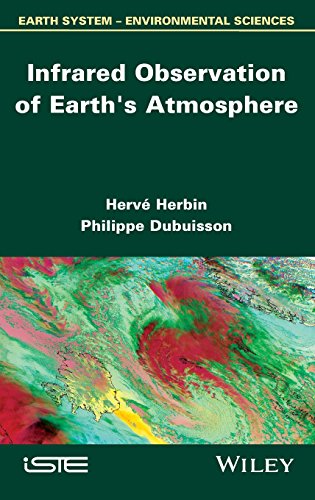

Most ebook files are in PDF format, so you can easily read them using various software such as Foxit Reader or directly on the Google Chrome browser.
Some ebook files are released by publishers in other formats such as .awz, .mobi, .epub, .fb2, etc. You may need to install specific software to read these formats on mobile/PC, such as Calibre.
Please read the tutorial at this link. https://ebooknice.com/page/post?id=faq
We offer FREE conversion to the popular formats you request; however, this may take some time. Therefore, right after payment, please email us, and we will try to provide the service as quickly as possible.
For some exceptional file formats or broken links (if any), please refrain from opening any disputes. Instead, email us first, and we will try to assist within a maximum of 6 hours.
EbookNice Team

Status:
Available4.7
34 reviews
ISBN 10: 1848215606
ISBN 13: 9781119018520
Author: Philippe Dubuisson, Herve Herbin
This book is designed to provide the theoretical, but most of all, the practical bases needed for the achievement of atmospheric composition analyses from infrared remote sensing.
1: Basic Physics of the Atmosphere and Radiation
1.1. Structure and composition of Earth’s atmosphere
1.1.1. Vertical structure of the atmosphere
1.1.2. Atmospheric gases
1.1.3. Aerosols and hydrometeors
1.2. Atmospheric aerosols
1.2.1. Overview
1.2.2. Microphysical properties of aerosols
1.3. Clouds
1.3.1. Definitions and classification
1.3.2. Formation
1.3.3. Microphysical properties
1.4. Radiation in Earth’s atmosphere
1.4.1. Electromagnetic radiation
1.4.2. The foundations of radiometry
1.4.3. Solar and terrestrial radiation
1.4.4. Reflection and emission of radiation by a surface
1.5. Radiation budget of the climate system
1.5.1. Radiative balance of the atmosphere
1.5.2. The greenhouse effect and parasol effect
1.5.3. Radiative forcing of atmospheric components
1.5.4. Impact of aerosols on climate
1.5.5. Impact of clouds on climate
1.5.6. Climate sensitivity
1.5.7. Observation of radiative budget
1.6. For further information
2: Instrumentation and Sensors
2.1. Platforms, satellites and sensors
2.1.1. Types of orbits
2.1.1.1. Geostationary orbits (GEO)
2.1.1.2. Low Earth orbits (LEO)
2.1.2. Characteristic parameters of satellites
2.1.3. Geometry of lines of sight
2.1.3.1. Nadir
2.1.3.1.1. Instruments observing at the Nadir
2.1.3.2. Limb and solar occultation
2.1.3.2.1. Instruments observing at the limb
2.2. Infrared detection techniques
2.2.1. Radiometers
2.2.2. High spectral resolution instruments
2.2.2.1. Grating spectrometers
2.2.2.2. Fourier transform spectrometer
2.3. For further information
3: Forward Radiative Transfer in Absorbing Atmosphere
3.1. Gaseous absorption and emission
3.1.1. Overview
3.1.2. Rovibrational spectroscopy
3.1.2.1. Vibration of diatomic molecules
3.1.2.2. Vibration of polyatomic molecules
3.1.2.3. Vibrational spectrum
3.1.2.4. Rotation of diatomic molecules
3.1.2.5. Rotation of polyatomic molecules
3.1.2.6. Rotational spectrum
3.1.2.7. Rovibration
3.1.3. Line shapes
3.1.3.1. Natural broadening
3.1.3.2. Pressure broadening
3.1.3.3. Doppler broadening
3.1.3.4. Voigt profile
3.1.4. Line intensity and absorption coefficient
3.2. Radiative transfer equation in an absorbing medium
3.3. Solving the RTE
3.3.1. Models at high spectral resolution: line-by-line codes
3.3.2. Approximate modeling of gas absorption
3.3.2.1. Band models
3.3.2.2. k-distribution method
3.3.3. Boundary conditions and atmospheric parameters
3.4. For further information
Chapter 4: Forward Radiative Transfer in Scattering Atmosphere
4.1. Atmospheric scattering
4.1.1. Main properties of scattering
4.1.1.1. Refractive index
4.1.1.2. Size parameter
4.1.1.3. Effective cross-sections
4.1.1.4. Dimensionless efficiency
4.1.1.5. Single-scattering albedo
4.1.1.6. Scattering phase function
4.1.1.7. Asymmetry factor
4.1.2. Rayleigh scattering
4.1.3. Mie scattering
4.1.4. Non-spherical particles
4.1.5. Extinction coefficient and optical thickness
4.2. Polarization
4.3. Radiative transfer equation (RTE) in a scattering medium
4.3.1. General expression of the RTE
4.3.2. Solving of the RTE
4.3.2.1. “Three-dimensional” (3D) statistical methods
4.3.2.2. Explicit “plane–parallel” methods
4.3.3. Azimuthal dependence of the radiation field
4.3.4. Simplification of the phase function
4.4. Numerical methods to solve the RTE in a scattering plane–parallel medium
4.4.1. Approximate analytical expressions
4.4.2. Discrete ordinate method
4.4.3. Adding-doubling method
4.4.4. Successive orders of scattering method
4.5. List of radiative transfer codes
4.6. For further information
5: Methods of Geophysical Parameter Retrieval
5.1. Inversion process
5.1.1. Principle of the inversion process
5.1.2. The measurement vector and state vector
5.1.3. The forward model
5.2. Linear models
5.2.1. Linear least squares (LLS) method
5.2.2. Regularized linear model
5.3. Nonlinear inversion
5.4. Optimal estimation method (OEM)
5.4.1. Inversion method
5.4.2. Sensitivity of the measurement and informational content analysis
5.4.3. Error analysis for the retrieved profile
5.4.4. Example of water vapor profile retrieval from IASI
5.5. Lookup tables
5.6. For further information
6: Space Infrared Remote Sensing: Some Applications
6.1. Water vapor isotopologues
6.2. Biomass fires and trace gases
6.3. Volcanic eruptions
6.3.1. Sulphur dioxide
6.3.2. Volcanic aerosols
6.4. Physical properties of clouds
6.4.1. Classification and physical properties of ice clouds
6.4.2. Thermodynamic phase and altitude of clouds
infrared observations
4.4 earth's atmosphere
infrared view of earth
2 observations about the composition of the atmosphere
2 facts about earth's atmosphere
3 interesting facts about the atmosphere
Tags: Philippe Dubuisson, Herve Herbin, Infrared, Observation